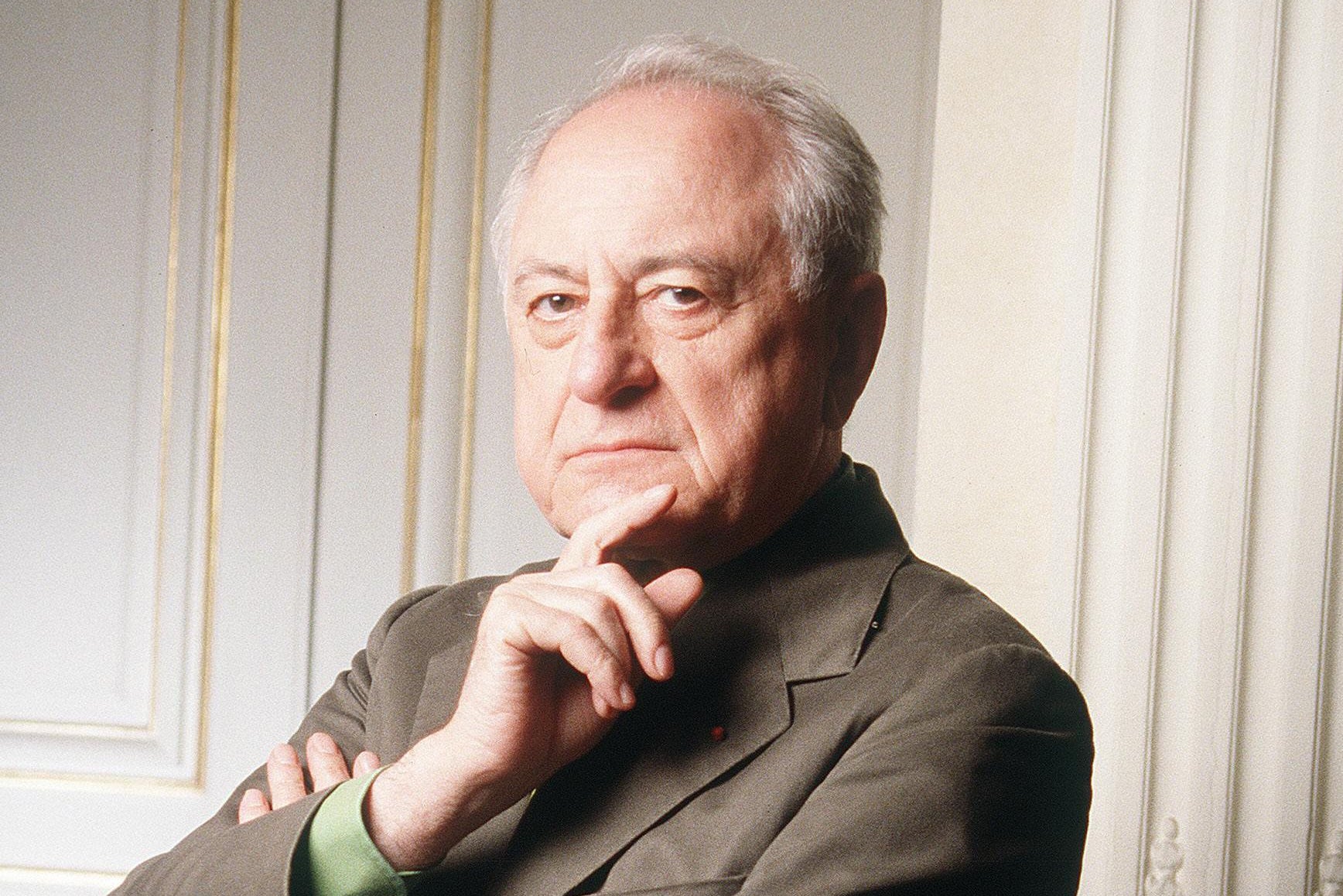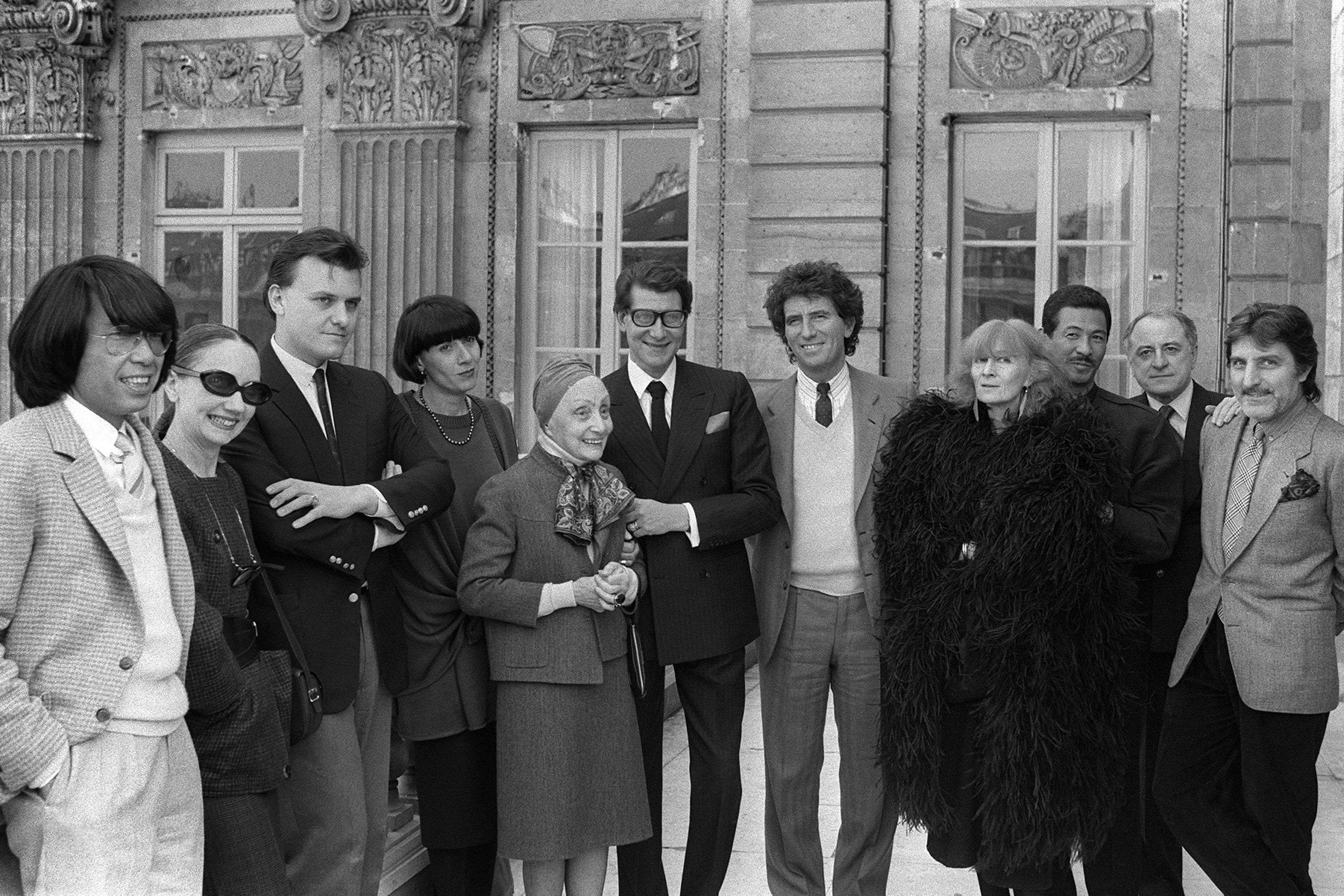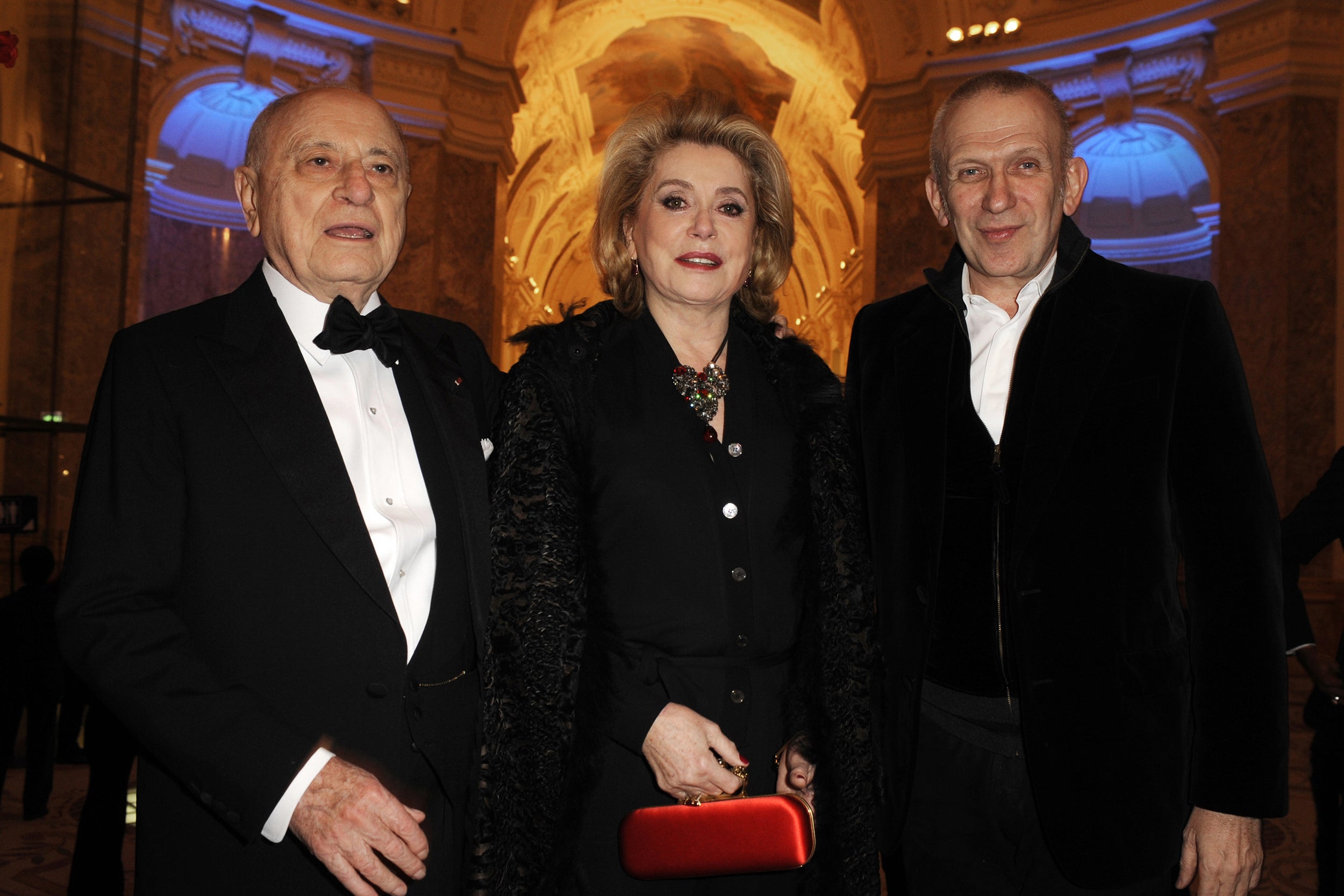Pierre Bergé, patron, philanthropist and gay rights advocate who shaped French fashion
Pierre Bergé, with his then-lover Yves Saint Laurent, founded the eponymous fashion house and went on to become Paris opera czar

Your support helps us to tell the story
From reproductive rights to climate change to Big Tech, The Independent is on the ground when the story is developing. Whether it's investigating the financials of Elon Musk's pro-Trump PAC or producing our latest documentary, 'The A Word', which shines a light on the American women fighting for reproductive rights, we know how important it is to parse out the facts from the messaging.
At such a critical moment in US history, we need reporters on the ground. Your donation allows us to keep sending journalists to speak to both sides of the story.
The Independent is trusted by Americans across the entire political spectrum. And unlike many other quality news outlets, we choose not to lock Americans out of our reporting and analysis with paywalls. We believe quality journalism should be available to everyone, paid for by those who can afford it.
Your support makes all the difference.Pierre Bergé transformed the French fashion industry as the managerial genius behind Yves Saint Laurent, and went on to have a tempestuous career as the czar of Paris opera.
Bergé and Saint Laurent, then lovers, co-founded the fashion house in 1961 and remained lifelong business partners, although they split up as a couple in the 1980s. Bergé, who died on Friday aged 86, ran the house for four decades, until 2002.
Under Bergé’s guidance, haute couture became more of a bottom-line business, using success in runway shows to propel the sales not only of ready-to-wear clothes but also of perfumes, handbags and other accessories with designer labels.
His ambitions carried him far from fashion into the worlds of politics and culture. Though his clients were mostly rich and conservative, he was a staunch supporter of the Socialist Party, a contributor to liberal causes and a patron and arbiter of literature, theatre and music.
Most of all, though, he seemed to relish the controversy that his wealth, power and prickly personality brought him. Well before the death of Saint Laurent in 2008, Bergé had become a social star in his own right. “People may hate me or love me, but they all want to brag that they once sat next to me at a dinner party,” he once said.

There seemed to be no neutral opinions about Bergé, a man of slight build, exquisitely tailored suits and oval, horn-rimmed glasses, which gave him an owlish look. Hailed as a master of the business deal, he was also denounced in some quarters as a scoundrel who fully deserved the fine he was ordered to pay for insider trading.
After President François Mitterrand, in 1988, put him charge of Paris’s opera houses, including the newly built Bastille Opera, Bergé scandalised the music world by firing Daniel Barenboim as its music and artistic director, contending that his salary was too high and that his plans for the house were too elitist. But as Bergé noted gleefully, he used that and other controversies to increase attendance at the opera house. “Parisians at this stage want a Barnum more than a Toscanini,” he said.
Philippe Collin, a film director and critic who knew Bergé for 40 years, said, “I think of him as a great Hollywood producer from the golden era.” And like the fables surrounding a Samuel Goldwyn Jr or a David O Selznick, tales of Bergé’s generosity were as legion as stories about his acts of gratuitous offence.
At the Saint Laurent atelier in Paris, a seamstress spoke of Bergé’s unstinting financial help to terminally ill colleagues, but another woman employed there called him a misogynist who promoted only men to the higher rungs.
At the Bastille Opera, employees of both sexes spoke sotto voce about Bergé’s “reign of terror”, which led to the resignations of much of the senior staff he had inherited. And fashion writers complained that negative reviews of Saint Laurent collections could get them banned, at least temporarily, from future shows.
Pierre Bergé was born on 14 November 1930, on the tiny Île d’Oléron, off the Atlantic coast of France. His father was a civil servant, his mother a schoolteacher. Bergé moved to Paris as a teenager intent on becoming a journalist. Arrested during a political demonstration, he spent the night in jail with Albert Camus and then joined him for coffee when they were released the following morning.
After that chance encounter, Bergé, at a starry-eyed 19, became the editor and publisher of a left-wing magazine whose contributors included Camus and Jean-Paul Sartre. The publication did not last long, but it helped Bergé establish lasting friendships with Jean Cocteau and Christian Dior. And he became a companion of the painter Bernard Buffet, who became a mentor.
The defining moment in his life, as Bergé often said, was meeting Saint Laurent in 1958. Intense and introverted, Saint Laurent was already, at 23, a highly regarded designer for the House of Dior. “I instantly recognised his genius,” said Bergé, who was 29 at the time. The two men became lovers.
With Bergé as his manager, publicist and partner, Saint Laurent exhibited his first collection in 1962. By the 1970s, Saint Laurent was heralded as the most influential designer of his generation, epitomising the modern woman with swagger and extending fashion’s range of expression by bringing pea jackets, motorcycle jackets and cossack coats to haute couture.
For his part, Bergé demonstrated a business creativity that the fashion world had seldom seen before. In the 1960s, he expanded Saint Laurent’s operations from haute couture into the far more profitable ready-to-wear market, with boutiques in Paris, New York and other cities across the globe. When the haute couture operations needed capital in 1971, Bergé sold the ready-to-wear division to the Squibb Corporation, only to buy it back two years later.
In 1986, he arranged the sale of 25 per cent of the Saint Laurent empire to the Italian entrepreneur Carlo de Benedetti, and used the money to buy Charles of the Ritz, which owned a number of designer perfumes, including several Saint Laurent fragrances.
Then, in 1989, under Bergé’s guidance, the Yves Saint Laurent group became the first French design house to be listed on the Paris Bourse. Investor reaction was sensational. Trading had to be halted during the first two days because there were 28 buy offers for each of the 400,000 shares initially put up for sale. By 1990, the group was ringing up $500m (£370m) in annual sales.
But after profits and share prices plunged during the next few years, Bergé cut an extremely advantageous deal for himself and Saint Laurent in 1993 by selling the Yves Saint Laurent group for $655m to Elf Sanofi, the French pharmaceutical giant. The two men agreed to continue to manage YSL’s haute couture operations.

In addition to their glittering business relationship, Bergé and Saint Laurent shared a sumptuous lifestyle that made them fixtures in European high society. They filled their grand Paris apartment with antique furniture and covered its walls with Impressionist, Cubist and contemporary paintings. They flew guests by helicopter to their chateau in Normandy. In Marrakech, Morocco, they opened one of their villa’s buildings as a museum specialising in Islamic art. And in New York, they decorated their apartment at the Pierre Hotel with 19th-century Americana.
It was only in the 1980s that Bergé, who had always portrayed himself as an éminence grise, began to step out of Saint Laurent’s shadow. Bergé said that the victory of François Mitterrand and his Socialists in 1981, after 23 years of conservative Gaullist governments, persuaded him to raise his profile. “I was always a man of the left, though never a Marxist,” he said. “And I decided politics was interesting again.”
But strains in his relationship with Saint Laurent were also leading Bergé to cut a more public figure. Always timid, Saint Laurent became increasingly reclusive. In interviews, he admitted to struggles with alcoholism, an addiction to cocaine and nervous breakdowns. “Yves was born with a nervous breakdown,” Bergé said dismissively.
By the mid-1980s the two men were living apart, though their business relationship apparently remained as strong as ever. While Saint Laurent seemed able to summon up only enough energy to design his collections, Bergé displayed boundless dynamism. He united designers showing in France into one group, known as the Chambre Syndicale, to promote the fashion industry. He was the founding president of the French Fashion Institute and a founder of the Museum of Fashion Arts, both in Paris. Turning couture into an instrument of diplomacy, he staged Saint Laurent exhibitions in Moscow and Beijing.
With xenophobia and antisemitism rising in France, Bergé contributed generously to SOS Racisme, a defender of minorities. When the Aids epidemic began, he helped organise outpatient care and became president of Arcad SIDA, which financed Aids research and education. And as a publisher, he used his magazine Globe to push his favourite causes, often contributing mordant and outspoken columns.
Bergé did not mind risking Saint Laurent sales by his political activism. He offended some Saint Laurent clients by soliciting funds for the re-election of Mitterrand in 1988. The Gaullist candidate, Jacques Chirac, denounced Bergé as the “foremost representative of the Caviar Left”.
Bergé became a friend and trusted confidant of President Mitterrand. He was often invited to the President’s country home, where they discussed politics and culture during long walks in the woods. After Mitterrand named him president of the Paris Opera, it opened a futuristic venue at the Place de la Bastille in time to celebrate the 200th anniversary of the French Revolution, in 1989.
Even as critics questioned his credentials to run the opera, Bergé poured fuel on the controversy when he fired Barenboim as the musical director of the Bastille Opera and replaced him with Myung-Whun Chung, a Korean-American conductor who at the time was not well known. After that, hardly a month went by at the opera without disputes with singers and stagehands or with senior employees who left in a huff over Bergé’s autocratic style.
As opera czar, Bergé coordinated the Bastille Opera; the Palais Garnier, the famous older opera house; and the Salle Favart, the traditional home of the Opéra Comique. He admitted that he had failed in several of his goals. Instead of the promised 250 opera performances a year, he was rarely able to stage more than 140. During his four years at the helm of the Bastille, he said he could think of only two or three productions that were worth the price of admission. “The rest, for one reason or another, I haven’t liked at all,” he said. The critics generally agreed with him: the reviews were mostly brutal.
Still, like a circus impresario, Bergé gleefully pointed to the large audiences at the Bastille Opera as vindication of his stewardship. “People are curious about this building, which is so talked about,” he said. “Half of them never set foot in an opera house before. Yet suddenly, the opera has become the heart of French cultural and political life. It’s laughable.”

Success at the box office was not enough to keep Bergé in the job. Soon after the French parliamentary elections in 1993, a new Gaullist government got rid of him He.also began to have legal problems linked to his business deals. In 1994, he was indicted on charges of selling nearly $20m of shares in the Yves Saint Laurent group before the company announced a 94 per cent plunge in net income in September 1992. Convicted of insider trading, he was fined $600,000, which, on appeal, was reduced to $200,000.
Bergé’s sale of the company to Elf Sanofi only added to the scandal. For their 43.7 per cent holding, Bergé and Saint Laurent were paid $286m, or $158 a share, well above the stock’s $118 market price right before the sale.
Since 1996 Bergé had been president of Sidaction, a fund-raising organisation dedicated to Aids research and treatment. He was also a founder of the French weekly Courrier International and the gay magazine Têtu, and the chairman of the supervisory board at the newspaper Le Monde.
In March 2017, Bergé married his longtime partner, Madison Cox, a landscape architect and director of the Fondation Jardin Majorelle in Marrakech, part of the Fondation Pierre Bergé-Yves Saint Laurent in Paris. (Cox survives him.) Most recently, Bergé was working on two museums dedicated to Yves Saint Laurent that will open next month: in Paris in the former premises of the haute couture house, and in Marrakech in a new building next to the Jardin Majorelle.
Age did not temper Bergé’s tough-minded assessments of himself and of others. Asked about an often unflattering portrayal of his relationship with Saint Laurent in the 2014 biopic Yves Saint Laurent, he replied: “Believe me, I was not happy to be there, supporting Yves, during those times. I did that because I was obliged to do that, because I loved him.”
And like another regal figure, Louis XV, who allegedly asserted that a deluge would follow his demise, Bergé seemed convinced that the world of fashion he helped create would not outlive him.
“The time of Chanel, Balenciaga, Dior and, of course, Yves – well, that time is over,” he proclaimed in a 2015 interview . “To me, that whole industry now – all money and marketing – it is all something like a lie.”
Pierre Bergé, fashion and opera czar: born 14 November 1930; died 8 September 2017
© New York Times
Join our commenting forum
Join thought-provoking conversations, follow other Independent readers and see their replies
Comments